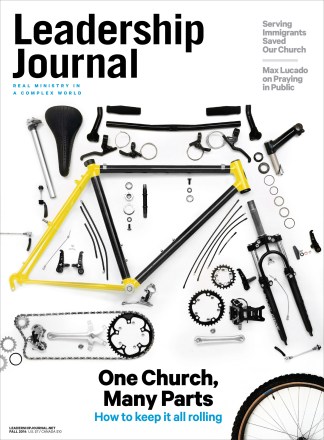The Book
View from the Top An Inside Look at How the People in Power See and Shape the World (Wiley, 2014) by D. Michael Lindsay
The Idea
D. Michael Lindsay (sociologist and president of Gordon College), conducted in-depth interviews with 550 of the most powerful leaders in the world over the course of 10 years. His subjects included 250 CEOs (including 20 of the Fortune 100 companies), 100 leaders of the world's largest non-profit organizations, 80 U.S. cabinet secretaries, and two former U.S. presidents. Lindsay set out to discover what sets these elite leaders apart. View from the Top details his findings, many of which overturn conventional thinking about what enables people to ascend to the upper echelons of leadership.
Overview
Introduction: Lindsay begins by describing his research methods and goal for the book: "to utilize narratives from the lives of individual leaders to explain general principles." He also addresses the apparent tension between Christian faith and power. "Some are surprised that I, as a Christian, am interested in power at all. Didn't Jesus eschew the trappings of power and overturn prevailing notions of greatness and influence?" Though Lindsay understands such objections, he believes "much good can come from people devoted to their faith sitting in positions of influence … provided their motives are kept in check by a life of prayer and accountability."
Chapter One: Act Personally, but Think Institutionally The first topic Lindsay addresses is the importance of networks. "An elite network is necessary for leaders to get anything done," he writes. At the same time, he warns that building a network with bulldog ambition can backfire. "But in the real upper reaches of power, a leader must not be too pushy or self-promoting—the top tiers of society resist the overbearing aspirants." Lindsay found that mentoring relationships were critical. "Having a good mentor proved more significant in predicting career success than where one went to college or how wealthy one was as a child." Although we may think of top leaders as self-made individuals, success also came from their ability to align themselves with elite institutions.
Chapter Two: Leadership Begins at 20 On average, the childhoods of elite leaders can be summarized in one word: ordinary. Sure, a privileged background gives someone a bit of a head start, but as Lindsay observes, childhood wealth actually turns out to be a poor predictor of becoming a high-level leader. Far more important to their eventual success was the willingness of leaders to take advantage of opportunities and connections in their 20s.
Chapter Three: More Breadth, Less Depth Lindsay writes about the importance of "leadership catalysts"—formative programs or experiences that catapult people into high-level leadership. He examines The White House Fellowship, a program that enables young people to work as aides to top level government officials. Lindsay reports that 32 percent of the program's participants go on to senior level leadership. The secret to such success: first-hand exposure to successful leadership, connection to an elite network, and the opportunity to develop a "generalist mindset," which is essential to leading.
Chapter Four: The Essence of Leadership Lindsay identifies three strengths of successful leaders. They're productive with their time, manage people well, and create cultures that facilitate human flourishing. To boost productivity these leaders employed strategies that included rising early, shortening meetings, remaining accessible to direct reports, and carving out time just to think. To manage well these leaders used relational influence over mere positional power, often devising creative ways to escape the corner office and connect with employees at every level. These leaders also excelled at guiding the corporate culture of the organizations they led. They accomplished this by gathering information on the state of their organizations then making sure their vision and passion trickled down to others.
Chapter Five: Strength in the Crucible of Crisis Lindsay takes a look at how leaders handle the three stages of a crisis: the preparation phase (before the crisis), the emergency phase (dealing with immediate problems), and the adaptive phase (bringing the organization back to stability). He stresses that just because a leader performs well in stage one or two, it doesn't mean he or she will automatically succeed in phase three. Returning an organization to stability after a crisis demands leaders tend to their own health of that of their organization to thrive over the long haul.
Chapter Six: Lead with Your Life Top leaders see no dividing line between their personal lives and their jobs. They realize they are "symbolic actors;" everything they do reflects on their organization. Their jobs tend to take a heavy toll on their family lives. Many were divorced or had little time for their children, though some found ways to stay involved. Contrary to the perception of the money-hungry executive, different forces drive them, including a desire to make a difference in people's lives and just loving what they do.
Chapter Seven: Lead for Good Many top leaders wield their power for the common good. In their best moments, they demonstrate an ethic of responsibility and conviction that create flourishing organizations that enhance the lives of employees and society in general. They also impact culture through philanthropy, and give most to educational institutes and second to religious causes.
Copyright © 2014 by the author or Christianity Today/Leadership Journal. Click here for reprint information on Leadership Journal.










